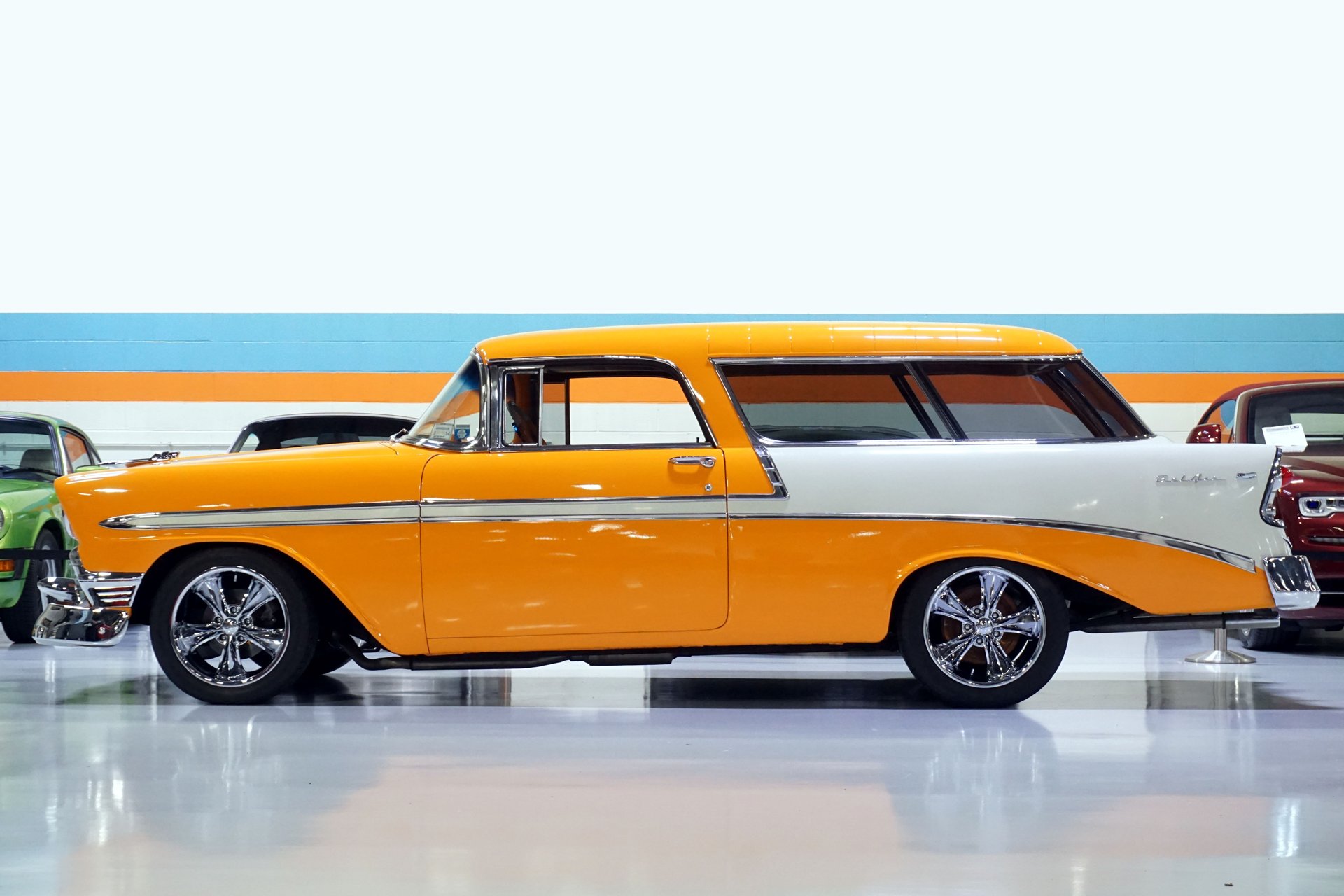The 1956 Chevrolet Nomad – The Iconic Sport Wagon
The 1956 Chevrolet Nomad endures as one of the most celebrated station wagons of all time. As the original sport wagon, the Nomad combined sleek, daring styling with V8 performance in an innovative new package. Its unique style influenced station wagon design for years to come. Let’s examine why the groundbreaking 1956 Nomad remains so iconic.
Revolutionary Design for a Family Wagon
In the early 1950s, most station wagons were upright wood-bodied vehicles focused on utility. For 1955, Chevrolet took the wagon in a radical new direction with the Bel Air Nomad. Its signature feature was a sloping roofline that extended rearwards, ending in a steep tailgate that mimicked a sedan trunk.
This elegant and athletic profile was unlike any other wagon. Together with two-tone paint, chrome trim and V8 power, the Nomad delivered sports car styling in a family-friendly package. It created the sport wagon genre that flourished in coming decades.
Innovative Lowered Chassis
The Nomad’s dramatic roofline significantly reduced rear headroom. To compensate, Chevrolet engineers employed an innovative solution – mounting the front and rear seats lower in the chassis to maintain interior space.
This pioneering lowered chassis and seating position enabled the sleek exterior look. Inside, passengers enjoyed comparable roominess to Chevrolet’s squared-off wagons. The blend of style and practicality was ingenious.
Potent V8 Performance
In addition to its gorgeous styling, the Nomad boasted stout V8 performance. Standard power came from the famed “Blue Flame” 235 cubic inch inline six. Optional V8 choices included the new 265 cubic inch engine, and a Corvette-derived 210 horsepower mill.
This brawny power gave the family-oriented Nomad serious authority out on the highway. Few other wagons could compete with its unique style, ample space and muscular V8 performance.
The Sport Wagon Legend Is Born
Chevrolet produced the Nomad for only 3 model years, from 1955 to 1957. But it had an enormous impact on the American automotive landscape. The Nomad’s blend of styling, power and versatility proved so successful that GM and other automakers rushed to create their own sport wagon models to compete.
The innovative Bel Air Nomad paved the way for an entirely new body style that flourished through the 1960s and beyond. More than just another station wagon, it represented innovative thinking and design talent.
The Nomad Legacy
Decades later, the 1956 Chevrolet Nomad remains a revered classic wagon. It was inducted into the National Historic Vehicle Register in 2021 recognizing its status as an automotive icon. The Nomad’s timeless appearance and influence on wagon design ensure its place among the most important station wagons ever created.
FAQs
What was the Nomad’s most unique design feature?
Its extended rear roofline and angled tailgate that resembled a sedan trunk rather than a typical wagon.
What seating capacity did the Nomad offer?
Front and rear bench seats accommodated up to 6 passengers comfortably.
What transmission options were available?
A 3-speed manual was standard, with optional automatic transmissions including Powerglide and Turboglide.
How many 1956 Nomads were built?
6,103 units were produced.
Why was the Nomad innovative for a wagon?
Its sports car-inspired styling and lowered seating position broke from traditional upright utilitarian wagon design.





